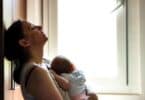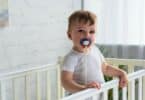To protect infants from preventable injuries and deaths, the U.S. Consumer Product Safety Commission (CPSC) has approved a mandatory safety standard for infant support cushions. The new rule, which passed unanimously in a 5-0 vote, addresses the risks of suffocation, entrapment, and falls associated with these products.
The new regulation aims to close gaps in safety by establishing clear standards that manufacturers must follow to reduce dangers linked to infant support cushions. These products, marketed for comfort and support, will now need to meet more rigorous safety criteria to safeguard infants and prevent tragic accidents.
What Products Fall Under the New Rule?
The rule applies to various products categorized as infant support cushions, including:
- Infant loungers
- Infant head positioner pillows
- Infant sleep positioners and anti-roll pillows
- Crib and wedge pillows for infants
- Stuffed toys, pads, or mats marketed as infant support cushions
- Multi-purpose pillows used for both nursing and lounging
- Tummy time pillows
Between 2010 and 2022, the CPSC identified 79 infant deaths and 124 injuries associated with infant support cushions. Most incidents occurred in babies younger than three months old, with fatalities often resulting from the misuse of these cushions in sleep settings. Tragically, parents or caregivers frequently placed infants on or near these products in adult beds, cribs, bassinets, play yards, couches, futons, or toddler beds, resulting in suffocation or entrapment.
These incidents highlight the need for stricter regulations to ensure infant safety and prevent these cushions from being used in ways that increase the risk of fatal accidents.
New Safety Requirements for Infant Support Cushions
The rule, which will take effect 180 days after its publication in the Federal Register, introduces new performance standards to address safety concerns. Some key elements of the rule include:
- Firmness Testing:
- All surfaces of the cushion that could come into contact with an infant must undergo firmness testing to ensure they do not conform to an infant’s face, which could block airways and cause suffocation.
- Sidewall Angle Restrictions:
- Any angle between a sidewall and the product’s surface must be greater than 90 degrees to prevent entrapment and suffocation risks.
- Incline Limitations:
- Cushions cannot have an incline angle greater than 10 degrees to reduce the chance of a baby’s head tilting dangerously forward, which can restrict breathing. The new height limit of less than 2 inches serves as a visual reminder to use the cushion only on the floor, minimizing fall risks.
- Prohibited Use of Restraints:
- The rule bans infant restraints to eliminate any misconception that babies can be left unsupervised in these products safely.
- Enhanced Warning Labels:
- Manufacturers must include conspicuous, permanent warning labels on the product to inform caregivers about the risks and proper usage.
Chair Alexander Hoehn-Saric of the CPSC emphasized the importance of this rule in closing safety gaps for products that were previously unregulated. “If a product is made for babies, it should be as safe as possible for their use,” Hoehn-Saric said. “This rule advances our important work to improve the safety of all durable infant products.”
With this new standard in place, manufacturers will now be held accountable to produce safer products that meet the needs of caregivers without compromising the well-being of infants.
Best Practices for Safe Use of Infant Support Cushions
While the new regulations will ensure that future products meet stricter standards, the CPSC reminds parents and caregivers to use infant support cushions responsibly. Here are some essential tips:
- Do not use infant support cushions for sleep or naps.
- If your baby falls asleep while using the product, transfer them immediately to a crib, bassinet, or play yard for safe sleep.
- Always stay close and supervise your baby during use.
- Use only on the floor.
- Avoid placing cushions on beds, couches, or other raised surfaces to prevent falls.
- Keep infant cushions out of cribs or sleep areas.
- Do not use these products inside cribs, bassinets, or other sleeping spaces, and avoid placing soft items like blankets near the cushion.
The Safest Place for Babies to Sleep
The CPSC emphasizes that the safest sleep environment for infants is on a flat, bare surface specifically designed for infant sleep, such as a crib, bassinet, or play yard. Soft bedding, pillows, and other items increase the risk of suffocation and should not be used in sleep spaces.
The approval of the new federal standard for infant support cushions reflects the CPSC’s commitment to improving the safety of infant products. This comprehensive rule addresses known risks, ensuring that manufacturers create products that meet the highest standards of safety.
Parents and caregivers should remain cautious, using these products as intended and following the latest guidelines to prevent accidents. With these changes, families can rest easier knowing that safety remains a priority in the marketplace.







